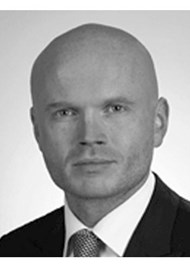Rhinoplasty of a deviated nose is known to be a challenge of its own kind, especially when patients presenting with a deviated nose are unaware of their underlying facial asymmetry. Patients with a successfully straightened nose, continue to perceive their nose as being deviated, in cases of severe concurrent facial asymmetry. The objectives of the present study were to establish the frequency and characteristics of facial asymmetry in patients with deviated noses. A total of 212 participants were analysed by reviewing preoperative frontal views of patients. A total of 152 patients underwent rhinoplasty, 60 controls were patients who underwent septoplasty without any external deviations of their noses. Frontal photographs were analysed by two observers. To investigate the perception of facial asymmetry, each face was divided into three subunits (upper, middle, lower), with each unit being sequentially presented for 10 seconds. Facial asymmetry was categorised into four types, according to the subunits involved: upper, mid, lower or mixed. Deviated nose shapes were categorised into five types. Facial asymmetry was more common in patients with a deviated nose (55%) than in controls (32%, p0.04). Mixed facial asymmetry was the most common type in the patient group. There was no difference in the incidence of asymmetry with respect to nasal deviation type. Additionally, the authors found out that the bony dorsal deviation tends to correspond to the smaller side of the face.




